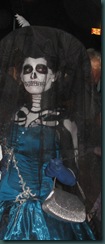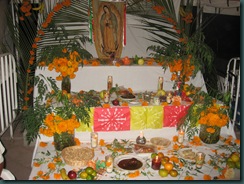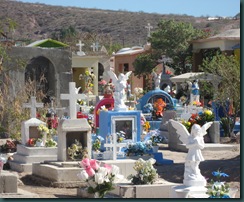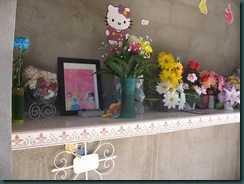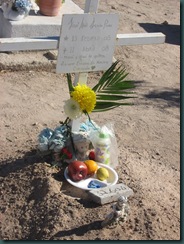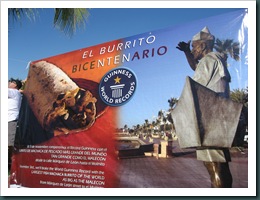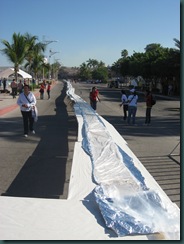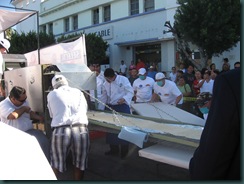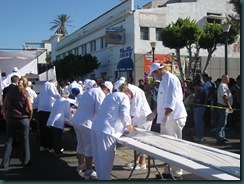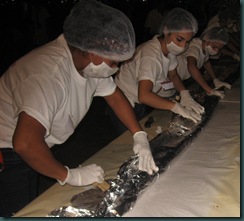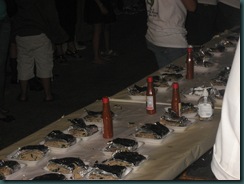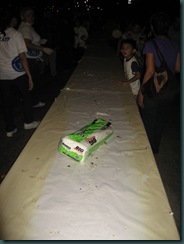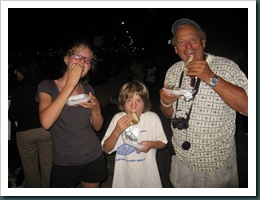As some of you know, before setting sail last September, I got engaged on a consulting assignment helping a company evaluate its strategic options. The work did not take a lot of time for the first, nearly 12 months, but in September of this year things got really busy. I flew back to California for a couple of weeks to help them work through a number of issues as they considered being sold to a potential strategic partner. Of course, as you’ve read previously, I left Barb and our kids at Marina de La Paz while I was gone.
Upon my return, I continued to be very busy working with this client, on the phone with them (and their potential European headquartered acquirer) for hours at a time and sometimes, due to time zone issues, even at midnight. Now, this amount of calls and dealing with time zones is par for the course in this business, but when you try doing it over the internet from Mexico it brings a whole new level of perspective and complexity.
When I returned to La Paz, we decided to stay at the marina because it gave us more flexibility for internet options. The marina has both cable modem and wifi hook ups (both of which work some of the time but not all of the time) and we also subscribe to Telcel’s 3G service. We need internet not only for emails and the web, but also for making phone calls either with Skype (which use Telcel has been actively trying to block in Mexico) and MagicJack (another very good voice over IP phone service particularly for calling the US). You’d think that with three connection options (cable, wifi and 3G) there would be no problem connecting and making phone calls. Oh, and don’t forget, for a week in this time period, we were also on the hard getting our bottom painted.
So, when the 3G would go down (which does not happen often but did on several occasions while on the hard), I’d run down the block back over to the marina to try their wifi service. I’d plug my computer into a wall outlet outside the marina office and try to use the wifi. But that service can be very unreliable, so while in the middle of a call, holding my computer in one hand, headset on my head, notepad, power cord, pen and Ethernet cable in the other hand, I’d walk down the ramp to the marina where I could plug into the cable modem service with the Ethernet cable and hopefully get a better internet connection and therefore a better phone connection.
So, now I am sitting on the dock, plugged into the cable modem, connected by wifi and trying to see if the 3G will work, all in an effort to make my phone calls. Uh, but then you need to realize that my computer battery is dying, and while there is plenty of power on the docks, the outlets use special marine grade power cords that are not compatible with a three pronged plug from my computer. Fortunately, this scene usually happened at night, because if it happened during the day, I’d also need a blanket over my head and computer so I could see the screen without the sun’s interference.
So, now I am sitting on the dock, praying that my computer won’t die, my internet connection will hold and I will be able to continue to carry on conference calls with people from Europe, California and me, in Mexico. And, all these cruisers are walking down the dock having a good chuckle at my expense.
So, I have taken to becoming a dock worker to help facilitate strategic business consulting services. Who would have guessed it would come to this. But that can be what it takes when you are in a client service business.
Michael -- in Mazatlan (and still a dock worker but hopefully for only a few more days.)

 Its Hard on the Hard. Last week we hauled our boat to have the bottom painted. Living on land on a boat is not all its cracked up to be: the dirt, climbing a 7 foot ladder to get aboard, needing to use ice to keep the fridge working (since it can’t pump sea water into the cooling system), etc.
Its Hard on the Hard. Last week we hauled our boat to have the bottom painted. Living on land on a boat is not all its cracked up to be: the dirt, climbing a 7 foot ladder to get aboard, needing to use ice to keep the fridge working (since it can’t pump sea water into the cooling system), etc.  The boat yard uses a rail car to which the boat gets tied at its four corners and then propped up using sometimes nothing more
The boat yard uses a rail car to which the boat gets tied at its four corners and then propped up using sometimes nothing more  than a pile of plywood to support the rest of the boat which is more or less resting on its keels. Divers are sent under the boat to make sure it's all secure.
than a pile of plywood to support the rest of the boat which is more or less resting on its keels. Divers are sent under the boat to make sure it's all secure. 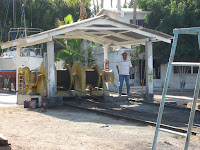 A large cable operated by a massive motor is used to then pull the car from the water onto dry land, or “the Hard”. As odd as this whole mechanism sounds, it was pretty painless, especially as compared to the other option which is to have your boat hoisted up onto a sling. In that case, you worry about the sling breaking and the nightmares that can cause! For us, it got even more exciting when the workers had to hoist the boat up a couple more inches using an hydraulic hoist to paint the bottom of the keels upon which the entire boat was sitting.
A large cable operated by a massive motor is used to then pull the car from the water onto dry land, or “the Hard”. As odd as this whole mechanism sounds, it was pretty painless, especially as compared to the other option which is to have your boat hoisted up onto a sling. In that case, you worry about the sling breaking and the nightmares that can cause! For us, it got even more exciting when the workers had to hoist the boat up a couple more inches using an hydraulic hoist to paint the bottom of the keels upon which the entire boat was sitting.







